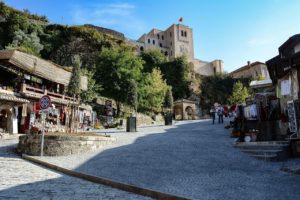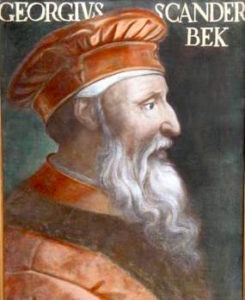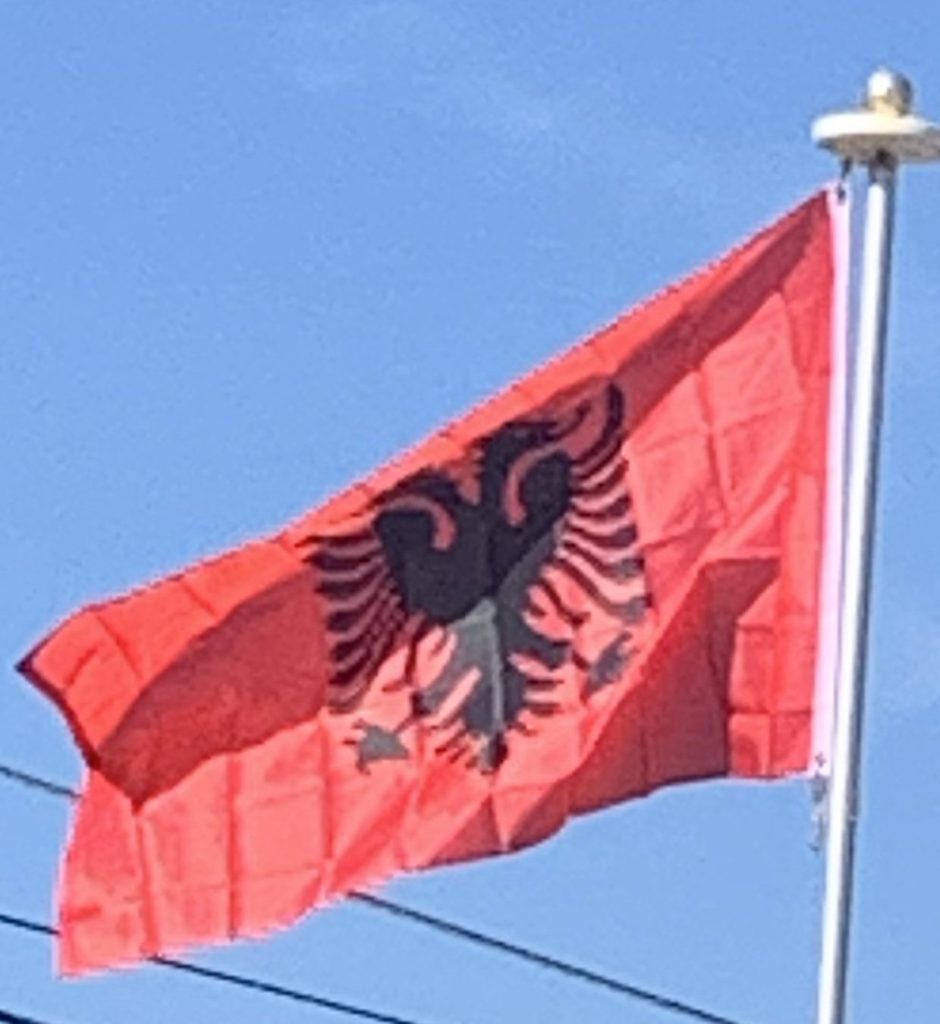The ethnogenesis of the Albanians is uncertain however the first undisputed mention of Albanians dates back in historical records from 1079 or 1080 in a work by Michael Attaliates, who referred to the Albanoi as having taken part in a revolt against Constantinople. At this point the Albanians were fully christianized.
The first semi-autonomous Albanian polity was formed in 1190, when archon Progon of Kruja established the Principality of Arbanon with the capital in Krujë within the Byzantine Empire. Progon, was succeeded by his sons Gjin and Dhimitri, the latter which attained the height of the realm. Following the death of Dhimiter, the last member of the Progon family, the principality came under the Albanian-Greek Gregory Kamonas and later Golem of Kruja. In the 13th century, the principality was dissolved. Arbanon is considered to be the first sketch of an Albanian state, that retained a semi-autonomous status as the western extremity of the Byzantine Empire, under the Byzantine Doukai of Epirus or Laskarids of Nicaea.

Few years after the dissolution of Arbanon, Charles of Anjou concluded an agreement with the Albanian rulers, promising to protect them and their ancient liberties. In 1272, he established the Kingdom of Albania and conquered regions back from the Despotate of Epirus. The kingdom claimed all of central Albania territory from Dyrrhachium along the Adriatic Sea coast down to Butrint. A catholic political structure was a basis for the papal plans of spreading Catholicism in the Balkan Peninsula. This plan found also the support of Helen of Anjou, a cousin of Charles of Anjou, who was at that time ruling territories in North Albania. Around 30 Catholic churches and monasteries were built during her rule mainly in Northern Albania. Internal power struggles within the Byzantine Empire in the fourteenth century, enabled Serbs’ most powerful medieval ruler, Stefan Dusan, to establish a short-lived empire that included all of Albania except Durrës. In 1367, various Albanian rulers established the Despotate of Arta. During that time, several Albanian principalities were created, most notable amongst them the Balsha, Thopia, Kastrioti, Muzaka and Arianiti. In the first half of the 14th century, the Ottoman Empire invaded most of Albania and the League of Lezhë was held under Skanderbeg as a ruler, who became the national hero of the Albanian medieval history.
Albania Under the Ottoman Empire:
After serving the Ottoman Empire for nearly 20 years, Gjergj Kastrioti Skanderbeg deserted and began a rebellion against the empire that halted Ottoman advance into Europe for 25 years.

The Ottoman invasion of the territory of Albania marked a new era in its history and introduced enormous changes in the political and cultural environment of the area. The Ottomans erected their garrisons across the south of Albania in 1415 and occupied the majority in 1431 although they reached Albanian coast for first time at 1385. Upon their arrival, Islam was introduced in the country as a second religion resulting a massive emigration of Christian Albanians to other Christian European countries such as the Arbëreshë to Italy while Muslim Albanians gradually settled to Turkey and other part of the Ottoman Empire such as Algeria, Egypt and Iraq.
